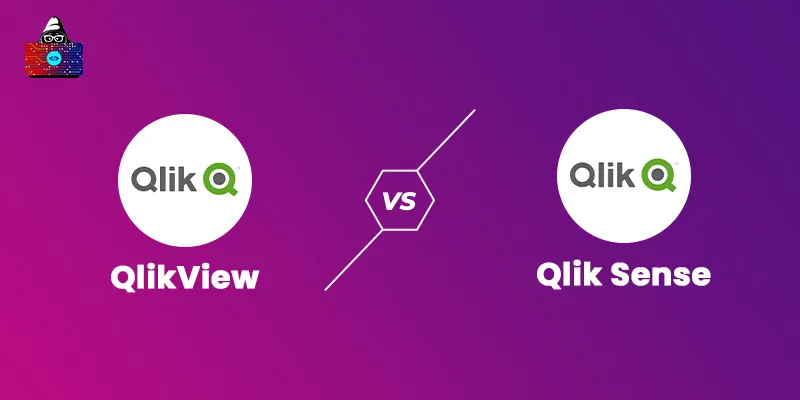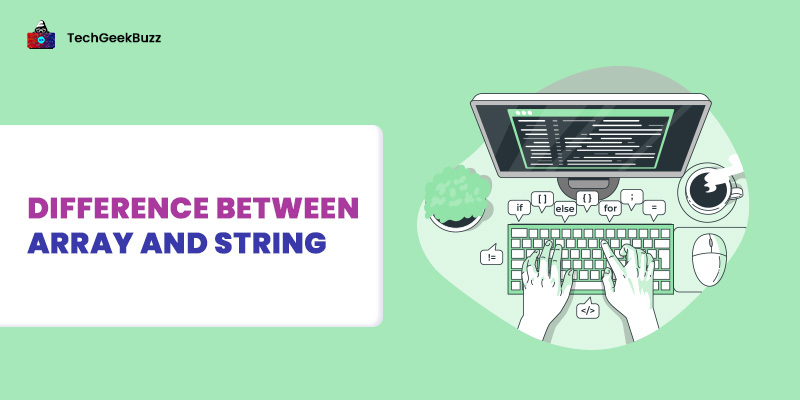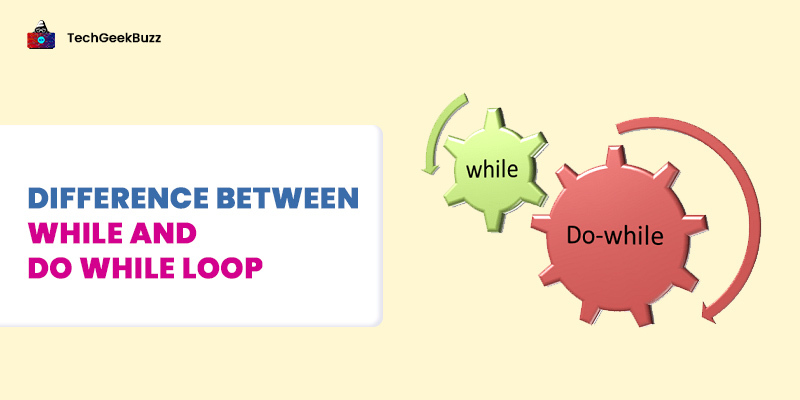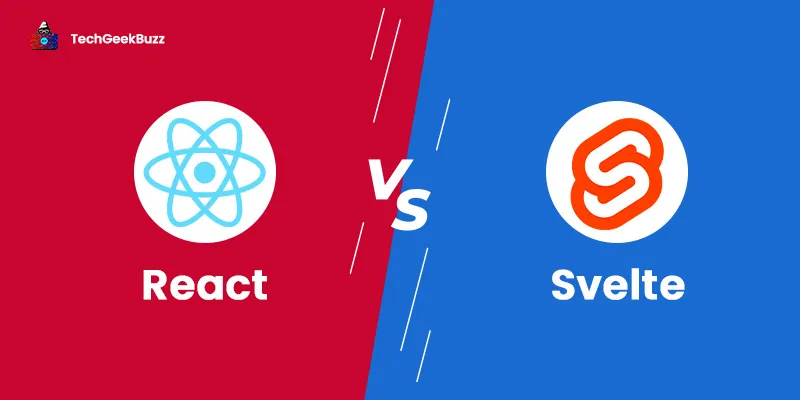The massive amounts of data generation have led to the need for fast and efficient data processing. The aim of data processing is to extract meaningful insights out of raw data, and this is where business intelligence (BI) tools come into play. A business intelligence (BI) tool is a software application that collects and processes large volumes of unstructured data from different sources.
Moreover, a BI tool helps prepare the collected data for analysis so that you can use it to generate reports, interactive dashboards, and attractive visualizations. With these visualizations and reports, organizations can quickly and easily make data-backed decisions. QlikView and Qlik Sense are two prominent BI tools out there. They both belong to the same product family, Qlik, but have a lot of differences.
If you are confused about choosing between QlikView and Qlik Sense, this article is for you. Through this article, we intend to provide you with an in-depth understanding of how QlikView and Qlik Sense differs from each other. Also, we will introduce you to Qlikview and Qlik Sense tools, and highlight their salient features, advantages, and disadvantages.
So, without further ado, let us get started!
What is QlikView?
QlikView is a business intelligence, data analytics, and data visualization tool that transforms raw and noisy data into actionable insights and presents those insights with graphic representation. This tool makes it effortless to understand overall data, find connections between data elements, and extract insights out of it when working with large data sets. It is ideal for non-technical users who are not aware of business intelligence, statistical analysis, and data mining .
You can integrate data with QlikView from different sources. QlikView is based on associative data model technology that enables you to create an intuitive interface for data analysis and data presentation. It also offers features for ad-hoc queries and speeds up the decision-making process.
With QlikView, you can:
- Get snapshots of data relations.
- Create presentations with your data.
- Create dynamic graphical charts and tables.
- Perform statistical analysis.
- Create tables to merge data from different sources.
- Create a unique user interface for data analysis.
History
Qlik developed QlikView in 1994 as version 1.0. It was a 16-bit application that could store a maximum of 16,000 values and 65,000 records. It had no graphs, and only logical inferences could be made. In the following year, Qlik released version 1.4, which was a 32-bit version with support for graphs.
Later, in 1996, version 2.0 was released with additional features, such as support for pivot tables, macOS compatibility, and multiple document interface (MDI).
Qlik then released version 3.0 in 1997 with AutoJoin, MultiBox, and TableBox features. The year 1999 witnessed the release of version 4.0, which included the functionality of client-server and a chart engine to process data efficiently.
Furthermore, version 5.0 was released in 2001 and version 6.0 in 2003 with many advanced features, such as improved graphics, support for web-based clients, and many others. As time passed, many versions of QlikView were released with several improved and advanced features.
The latest and stable version of QlikView is 12.30, which was released in November 2018.
Features of QlikView
The following are the salient features of QlikView:
- Associative Data Modeling: QlikView works on an in-memory associative model. Therefore, if you have knowledge of writing SQL SELECT queries, you can easily access the data.
- Platform: QlikView is a Windows product and is optimized for 64-bit architecture and multiple processors.
- Natural Analytics and Data Discovery: QlikView does not follow any specific pattern to search for data and associations. It runs a natural search through all the data stored in memory.
- Data Connectivity: QlikView comes with Qlikview DataMarket, a cloud-based data service (DaaS). It enables you to retrieve data sets from public and syndicated sources.
- Social Data Discovery: This feature allows you to share insights with groups or team members. Also, you can conduct live discussion sessions through this feature, which enhances user connectivity.
- Easy Application Development: QlikView has a unique architecture that integrates both frontend and backend. Therefore, the development of personalized applications becomes very easy with QlikView.
Advantages of QlikView
Here are some remarkable benefits of QlikView:
- Qlikview is an easy-to-use and intuitive platform.
- It comes with QlikView Mobile that is compatible with iOS and Android devices through Qlikview Servers.
- The dynamic and visual dashboards of QlikView help you analyze data and interpret the results efficiently and quickly.
- It serves as a dynamic Business Intelligence (BI) ecosystem.
- The collaboration feature makes it easy for teams to discuss and make data-driven decisions.
- It does not need much maintenance.
- Due to the data being stored in memory, it never compromises the speed of data delivery.
- It has an immediate response time without any limitations on the amount of data.
- You get various attractive and appealing data visualization options, such as pie charts, charts, bar graphs, etc., to choose from.
Disadvantages of QlikView
The following are some significant downsides of QlikView:
- Though QlikView can load heavy data, the data load entirely depends on the system’s RAM.
- You can get the basic plan at a low price, but QlikView demands a lot of purchases with it. Therefore, it does not serve as a cost-effective solution for small-scale businesses.
- It has unsatisfactory and poor customer support.
- You need an in-depth knowledge of SQL to write scripts.
When to Choose Qlikview?
QlikView is ideal to choose when you need to solve complex analytical problems. If you have in-depth knowledge of SQL, this tool is for you. Also, it is a perfect business intelligence tool for businesses of all sizes, i.e., small, medium, and large.
What is Qlik Sense?
Qlik Sense is a data discovery and data visualization tool that lets you create interactive and attractive visualizations, leading to meaningful insights. It runs on an associative QIX engine through which users can collect and integrate data from different sources. It enables you to integrate data from hundreds of sources, from apps and databases to cloud services.
This tool also comes with a Windows desktop application called Qlik Sense Desktop that lets you create interactive visualizations, charts, dashboards, and analytical applications for local and offline usage.
Moreover, it leverages artificial intelligence and augmented analytics to help users understand and utilize data effectively. Qlik Sense is a one-stop solution for all your analytical needs. It supports a complete set of analytics use cases, from self-service visualization and interactive dashboards to embedded analytics, augmented analytics, data storytelling, and reporting.
History
Qlik introduced a new business intelligence tool, Qlik Sense as Qlik Sense 1.0, in 2014. Thereafter, the tool has undergone many major changes with the release of different versions, such as versions 1.1, 2.0, 2.1, 2.2, 3.0, 3.1, and 3.2. Qlik started releasing various versions of Qlik Sense in several patches in different months of the year and named them based on the month and year in which they were released. The latest version is Qlik Sense November 2019, Patch 4.
Features of Qlik Sense
The following are the notable features of Qlik Sense:
- Associative Model: Like QlikView, Qlik Sense also uses an associative model where all the data is stored in Qlik Sense. The data can be from an external source. If a data value has many relations or associations with other data values, Qlik Sense helps you to derive insights from such associations between data values. It uses the QIX engine to evaluate and recalculate associations within the blink of an eye.
- Visualizations and Analytics: Qlik Sense offers smart and advanced data visualization and analytics. The visualizations are very flexible and interactive that they can adjust to any screen size. Qlik GeoAnalytics is responsible for creating highly interactive visualizations. It supports advanced mapping visualizations and calculations.
- Self-Service Creation: This feature allows you to create a Qlik Sense file or an application easily. Qlik Sense comes with a drag-and-drop feature for data preparation and data loading, which eliminates the need to deal with queries and scripts. Therefore, even people from non-technical backgrounds can use Qlik Sense effortlessly.
- Search and Conversational Analytics: This feature provides an effortless way to interact with data and extract insights out of it using natural language. Qlik Sense comes with Insight Advisor that automatically generates meaningful and relevant insights for users based on Natural Language Processing (NLP).
- Data Storytelling and Reporting: This feature of Qlik Sense creates a whole data story when we feed data to it and provides an outlook of that data for analysts to extract insights.
- QIX Engine: QIX Engine stands for Qlik Indexing Engine. It is responsible for optimizing data use into Qlik Sense by indexing and compressing data into Qlik Sense’s memory as binary.
Advantages of Qlik Sense
Here are some significant advantages of Qlik Sense:
- Qlik Sense provides a modern, intuitive, and user-friendly interface.
- Data association and linking are pretty easy in Qlik Sense due to its associative model.
- Qlik Sense is compatible with all types of devices, such as desktops, laptops, mobile phones, and tablets.
- It enables you to share Qlik Sense reports with other users through a centralized hub.
- Since Qlik Sense is compatible with mobile devices, you can use it from your mobile phone anywhere and anytime.
- It provides excellent management services, which ensures data safety. The Qlik Management Console (QMC) controls and monitors all Qlik Sense services.
- Users from non-technical backgrounds can use Qlik Sense with ease due to its drag-and-drop feature for data preparation and loading and machine-guided analytics.
Disadvantages of Qlik Sense
Some of the common disadvantages of Qlik Sense are as follows:
- While working in the analysis mode, you may sometimes require more memory space, which may slow the processing and hinder the functioning of the app.
- ODBC connections may cause glitches.
- The storytelling feature has limitations on languages, such as Japanese and Chinese.
- Users may get unauthorized access as a result of technical glitches.
When to Choose Qlik Sense?
Qlik Sense is a better choice when it comes to creating appealing and attractive visualizations. It does not require you to have any technical or SQL knowledge since it provides drag-and-drop functionality. Also, it is ideal for small and medium-sized businesses.
Qlikview vs Qlik Sense - A Head-to-Head Comparison
The following table highlights the key differences between QlikView and Qlik Sense:
| Parameters | QlikView | Qlik Sense |
| Definition | QlikView is the first generation analytics platform developed by Qlik and is based on guided analytics. | Qlik Sense offers modern data analytics solutions and self-service data discovery and analysis developed by Qlik. |
| Online Analytical Processing (OLAP) Functionality | It provides OLAP functionality to carry out online analytical operations. | It does not provide support for the OLAP functionality. |
| Self-Service Visualizations | QlikView does not offer the feature of self-service visualizations. | Qlik Sense provides self-service visualizations. It enables you to combine, load, and visualize your data of any size. |
| Guided Analytics | It provides a guided analytics function. | It does not provide a guided analytics function. |
| Data filters | You need data filters in QlikView. | There is no need for data filters in Qlik Sense. |
| Data Storytelling | QlikView does not come with the feature of data storytelling. | Qlik Sense offers a unique feature of data storytelling. |
| Integrated App Development | It provides an environment for integrated app development since it is a development-based tool. | It does not provide an environment for integrated app development since it is a visualization-centric tool. |
| Visualizations | QlikView provides basic visualizations. | Qlik Sense provides modern visualizations. Also, it provides a drag-and-drop feature to help you create visualizations quickly and effortlessly. |
QlikView vs Qlik Sense - Which is Better?
QlikView and Qlik Sense serve as business intelligence tools. However, they have many dissimilarities between them, as discussed in the above table. QlikView is a more traditional data analytics, business intelligence, and reporting tool, while Qlik Sense is a modern data exploration platform with self-service data discovery and data analysis features. It is quite inappropriate to claim that one tool is better than the other.
Both these tools are better in their own ways and are useful for different purposes. QlikView emphasizes application development and guided analytics, and it concentrates less on interaction and responsiveness. It is ideal for those who are well-versed in writing SQL queries.
On the other hand, Qlik Sense is well-known for its ease of use and simplicity since it provides drag-and-drop functionality for data preparation and data loading. It is ideal for individuals with technical as well as non-technical backgrounds.
Conclusion
QlikView and Qlik Sense are both products of Qlik. They are both easy to use and deploy and help you create attractive visualizations. However, both these tools have their respective purposes. Therefore, it is always better to choose between QlikView and Qlik Sense, depending on your requirements.
Moreover, QlikView and Qlik Sense complement each other. You can use both of these tools simultaneously. Leverage QlikView to solve complex analytical problems and use Qlik Sense to create attractive visualizations in a jiffy.
We hope you find this article helpful in understanding the difference between QlikView and Qlik Sense. Also, feel free to post your queries or suggestions in the comments section below.
People are also reading:





Leave a Comment on this Post